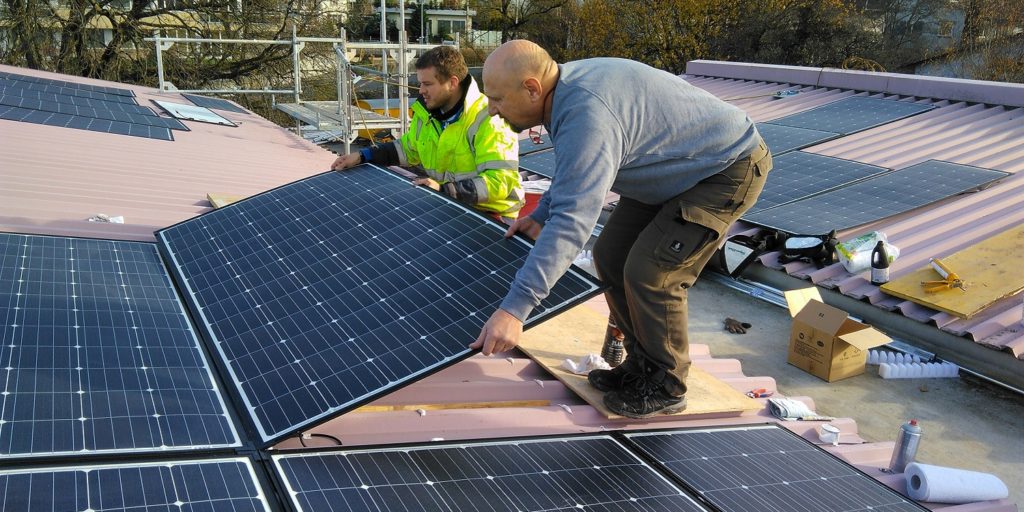The ongoing ravages of Covid-19 last year, and related solar power price inflation, failed to dent the photovoltaic industry's ability to keep generating new jobs, according to the latest clean energy employment report published by the International Renewable Energy Agency (IRENA).
The Renewable Energy and Jobs Annual Review 2021, published jointly with the United Nations' International Labour Organization (ILO) estimated solar employed 3.98 million people last year, up from 3.8 million in 2019.
The latest edition of the annual report included some eye-catching nuggets of information such as the claim made by the Mini Grids Partnership of UN partner organization Sustainable Energy for All, that only 13% of the $2.07 billion pledged from 2012 to March last year, by development finance institutions to foster mini-grid deployment, has actually been disbursed.
Workers' rights
The report also cited a U.S. study which estimated 43% of the workforce employed in coal-fired power plants could be redeployed on solar plants without any additional training, and the authors of the study suggested the large proportion of renewables employees who would need only on-the-job training for a clean energy role offered a no-brainer for governments around the world to achieve employment targets via Covid-recovery spending plans.
That ties in with the paragraph on page 90 of the report which hints at a possible pivot away from the idea the private sector is best equipped to drive the energy transition. While the report's authors state private companies have steered maturity in renewables technology, as well as significant price falls, they add: “But this will no longer suffice,” as interventionist government measures will be required to ensure the jobs windfall from the clean energy revolution is targeted towards those affected by fossil fuel job losses; that employment benefits are shared equitably across society, and geographically; and to ensure the good quality of renewables industry positions.
This year's study also estimated labor costs supply around 17% of the development costs of large scale solar projects, and around 32% of operations and maintenance expenses. According to the report, labor costs account for only around 6-7% of polysilicon prices, and 10-11% of solar cell and module costs but make up 27-31% of wafer price tags.
In terms of solar job numbers, the IRENA-ILO study said China‘s PV workforce rose from 2.2 million to 2.3 million last year and numbers were also up in Germany, where they rose by 5,800 to 43,900 in 2019, in the latest available statistics; and in the Philippines, from 33,700 to 41,035. IRENA has estimated the German figure could have risen to 51,000 last year, as part of 239,000 solar jobs across Europe, around 194,000 of which were in EU member states.
Photovoltaic industry job numbers fell, though, in the U.S., from 240,000 to 231,000; in Japan (241,000 to 220,000); in India (a 15% year-on-year reverse to 163,500); and in the U.K. (to 7,500 in 2019-20). The initial 1 GW of mini grid generation capacity targeted in India could help create 800-877,000 new positions, according to the report.
The numbers
Elsewhere, the report estimated Brazil had 68,000 solar jobs in 2020 and Malaysia 54,900 in the latest available figures, which refer to 2019. South Korea hosted 19,300 solar roles in 2019 and Vietnam 126,300 last year, although the report's authors expect the numbers to slow there because of grid congestion constraints on new PV development.
The report noted the 500 MW Kalyon solar factory built in Turkey added 1,500 jobs last year and said Canada had around 3,000 solar posts, with Jordan boasting “more than 2,000.” The South African government estimated it had 21,451 solar jobs in 2020.
As far as off-grid solar employment was concerned, the report's authors admitted it was much more difficult to be certain about the numbers. Based on a belief many off-grid companies managed to retain staff despite only 250 MW of generation capacity being deployed, IRENA-ILO said 342,000 such jobs may have been maintained last year, with around 191,400 of them in South Asia and 150,000 in east, west and central Africa.
This content is protected by copyright and may not be reused. If you want to cooperate with us and would like to reuse some of our content, please contact: editors@pv-magazine.com.




1 comment
By submitting this form you agree to pv magazine using your data for the purposes of publishing your comment.
Your personal data will only be disclosed or otherwise transmitted to third parties for the purposes of spam filtering or if this is necessary for technical maintenance of the website. Any other transfer to third parties will not take place unless this is justified on the basis of applicable data protection regulations or if pv magazine is legally obliged to do so.
You may revoke this consent at any time with effect for the future, in which case your personal data will be deleted immediately. Otherwise, your data will be deleted if pv magazine has processed your request or the purpose of data storage is fulfilled.
Further information on data privacy can be found in our Data Protection Policy.